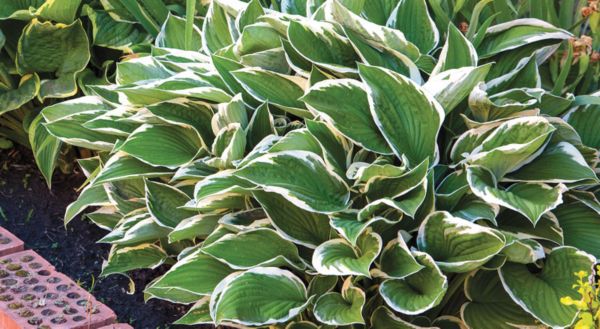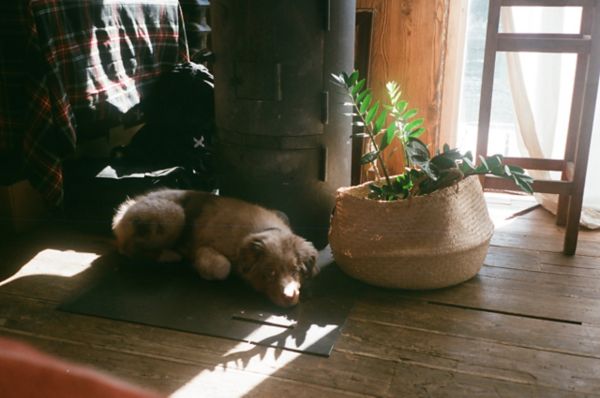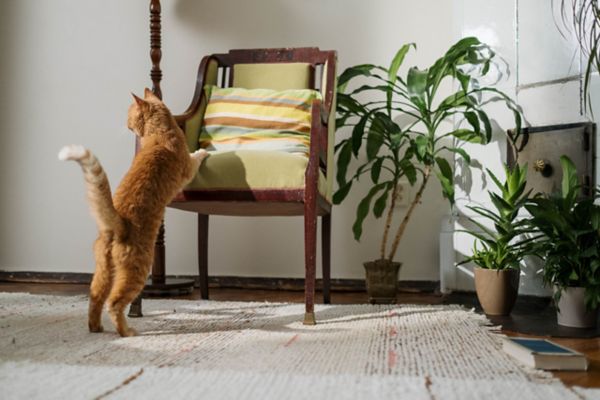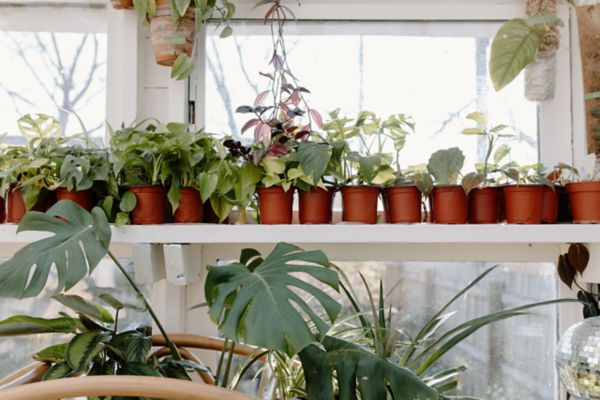How to Grow Palms
Authored by Leah Chester-Davis
Palms lend a tropical touch to your home, no matter where you live. There’s just something about their dramatic, gorgeous, distinctive foliage that conjures up dreams of ocean breezes and sun-kissed faces. No wonder they are so popular.
These exotic plants have many uses in home décor. They add an elegant, architectural element to any room. They can serve as screens, particularly when several are grouped together. They are great accent plants. They also pair well with many other plants. In warm months, take them outside and pair with a variety of colorful annuals to punch up the tropical feel even more.
Palms are often described as having either palmate or pinnate foliage. Hold your hand out with your fingers spread wide and that is an example of a palmate or fan-shaped style. Pinnate are more like a feather, with a long central stalk with divided foliage that runs along it. Palms typically grow outdoors year-round in USDA Zones 9 to 11, though there are some hardy palms that can grow in zone 6.
About palm
| Botanical name: | Numerous and varied, in the Arecaceae family |
| Common name: | Palm |
| Plant type: | Woody tree; houseplant |
| Size: | Varies |
| Sun exposure: | Bright, indirect light as a houseplant; partial shade outdoors |
| Soil type: | Fertile, well-drained |
| Soil pH: | 6.0 to 8.0 |
| Hardiness zones: | 6 to 10, depending on type, elsewhere as houseplants |
| Average first frost: | Varies by region |
| Average last frost: | Varies by region |
| Container friendly: | Yes |
| Beginner friendly: | Yes |
Indoor palm plants
Here are a few palms that are popular as indoor plants with a couple of hardy palms included:
Areca palm
(Dypsis lutescens)
Areca palm, sometimes called butterfly palm, is multi-stemmed and one of the most popular houseplant palms. Its yellowish stems resemble bamboo. They are topped with pinnate, upward-curving, light green leaves, which are also known as fronds, that grow 3 to 6 feet long. Each leaf has many lance-shaped leaflets per side. It grows in zones 10 to 11.
Parlor palm
(Chamaedorea elegans)
Parlor palms are commonly grown as houseplants. They can grow indoors with little exposure to natural light so are a good choice for offices or homes. They are winter hardy in zones 10 to 12. Cat palm, bamboo palm, neanthe bella palm, and grass-leafed palm are all types of parlor palms.
Majesty palm
(Ravenea rivularis)
Majesty palm is another classic palm houseplant. It has medium green to dark green, upright, sturdy fronds. It can tolerate some low light conditions temporarily but prefers medium to bright light. Winter hardy in zones 10 and 11.
Ponytail palm
(Beaucarnea recurvata)
Ponytail palm is a popular houseplant that offers an unusual appearance with a large, swollen trunk at its base that narrows as it grows upward. It is topped with a rosette of evergreen leaves that are long and grass-like and cascade downward. It grows in zones 9 to 10 and is not a true palm, though its name and popularity give it a spot on our list.
Windmill palm
(Trachycarpus fortunei)
Windmill palm boasts that iconic feature many people think of when it comes to palm trees. It has a single trunk that is covered in brown, hairlike fibers. The trunk is topped by fan-shaped fronds that extend in an arching or upright manner in all directions. It can grow quite tall, as much as 40 feet, in zones 10 and 11, but typically grows to about 10 feet in cooler zones. It is hardy to zone 7. It will need to be sheltered from winter winds.
Needle palm
(Rhapidophyllum hystrix)
Needle palm is one of the hardy palms that grows in zones 6 to 10. This fan palm grows 3 to 6 feet tall and 4 to 8 feet wide in a shrub-like, clumping manner with very little trunk. It needs full sun to part shade. It will need some protection from winter winds. It can grow in the landscape or in containers.
Growing
Palms are typically slow growers. Indoors, they need bright, indirect light such as a south- or west-facing window. Even though palms derive from tropical regions, when growing them outdoors, many of them, particularly if also grown as a houseplant, benefit from a partially shaded spot. Others can handle the full sun. Check the growing conditions for your palm.
Palms are typically slow-growers.
Planting
Palms require fertile, well-drained soil. For indoor plants, select a container with drainage holes and use a well-draining, general-purpose potting mix or a mix specifically labeled for tropical plants or for cactus, palms, and citrus. When repotting a palm, select a container that is no more than two sizes larger than its current container.
Keep potting mix evenly moist but not wet or soggy. Palms also like humidity so areas of your home that have higher humidity levels, such as a bathroom, can be beneficial. Or place the container on a pebble tray. Add water to the tray without the water reaching the bottom of the container; the container needs to sit on the pebbles.
When planting outdoors, the hole size needs to be about 6 inches larger in diameter than the root ball. Avoid planting too deep. Plant at the same depth as when field grown or slightly deeper than container grown. Refill holes with the removed soil. Do not amend soil. Water thoroughly.
When repotting a palm, select a container that is no more than two sizes larger than its current container.
Fertilizing
- A general-purpose houseplant fertilizer can be used a couple of times each year during the growing season, March to September. Or use organic palm tree fertilizer. Follow the label directions. If you wish the plant to grow more quickly, fertilize more often, always following label directions to avoid overfertilization. Cease fertilization during the fall and winter months.
- For those in the landscape, begin fertilization three to four months after planting. Use a balanced, specialty palm fertilizer and follow label directions.
Controlling Pests, Diseases, and Other Problems
- Spider mites, scale, and mealy bugs can be problems. Giving your indoor plant plenty of bright, indirect light and a higher humidity level helps. Washing off the foliage can help remove mites. Because palms grow larger than most other houseplants, mix water and a mild soap spray, such as 1 teaspoon mild liquid soap in 4 cups of water. Spray onto the foliage. Remove mealybugs and scale by swiping a cotton swab dipped in rubbing alcohol on the affected area.
Wash foliage to remove pests.
Expert Tips
- Like most other indoor plants, palms enjoy a summer vacation outdoors. Move to a shady, protected location to help them acclimate and then keep them in a shady location, so they do not sunburn.
- On houseplants, remove any old fronds that have started to yellow or turn brown. Otherwise, palms do not require pruning. On outdoor plants, some are self-cleaning and do not need pruning. Check with your garden center for guidelines based on your type of palm.
- Mist often to add humidity and to help prevent spider mites.
Frequently asked questions
How often should I repot my palm tree?
Palms do not like to be repotted often. Select a beautiful container and enjoy your plant and container for several years, around 2 to 4. Repot in the spring or early summer if it becomes rootbound.
How often should I water my indoor palm?
This can vary, depending on the conditions in your home, such as humidity levels and heating and cooling. Keep the soil evenly moist.





